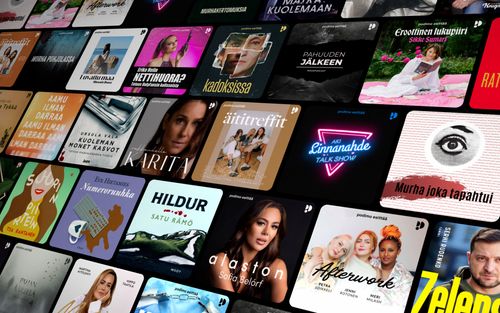Michelle McQuigge tells us why she can’t do her job without alt text
A11y Rules Soundbites - Podcast tekijän mukaan Nicolas Steenhout

Kategoriat:
Michelle McQuigge is a blind reporter with the Canadian Press. Many organizations do press release with images of text on Twitter, making her job impossible. She also wishes designers and developers to know that if you don't implement accessibility, you're going to lose big! Transcript Nic: Hi. I'm Nic Steenhout. You're listening to the Accessibility Rules Soundbite, a series of short podcasts where people with disabilities explain their impairments and what barriers they encounter on the web. Nic: Today I'm talking to Michelle McQuigge. She's been a reporter with the Canadian Press for 12 years. She's a contributor to AMI-audio and is, as she told me, totally blind. Nic: Hi, Michelle. Thanks for coming on the show. Michelle: Hi. My pleasure. Thanks for having me. Nic: Great. So tell us a little bit about your disability. Michelle: As far as disabilities go, mine is actually quite straightforward. I'm totally blind. I have been since the age of about nine months old. And, as a result, I've been using adaptive tech all my life. And have been a JAWS user for, oh, God, since high school. A couple of decades now, at least. Nic: Right, so you started with JAWS, which is probably why you're staying with it. Do you have any thought about- Michelle: For now. I mean, honestly, it's only a matter of time until I switch to NVDA. It's also a matter of me finding time to master it and just sort of know what it controls, but I don't anticipate giving Freedom Scientific any more money in my lifetime. Nic: Fair enough, yeah. What would you say is your greatest barrier on the web? Michelle: Definitely I feel that people have yet to master the best way to handle visual media. Whether it's photos without captions, text that could easily be rendered in text form, but being captured via screenshot instead. Or, websites that don't embed video in an accessible way. Either they have players that are not easy to find or to control. Or, they have video that is either muted or blasting away as soon as you open the site, and you have no means of controlling that yourself. Michelle: All things considered, I would just like to have an accessible player that's easy, where the controls are easy to spot, and easy to manipulate. Ready, right there so that you can decide when, if at all, you wish to view the content. That, however, seems to be a pretty rare commodity and that's a real struggle. The photos, possibly even more so because that's something I encounter for work all the time. People will post official statements on their Twitter feed and it's a friggen image and I can't read it. You're not supposed to do that. Nic: Yeah. Michelle: To do that. So whether it's anything from an amusing meme, to actual content that I need to do my job. This is something I encounter daily and it's very frustrating. Nic: I'm fascinated that 25 years ago, I was telling people, "If you put an image on the web, use alt text because if it's informative, it needs to be accessible programmatically." Nic: And 25 years later, we're still encountering the barrier, day in and day out. Do you think there's an improvement somewhat or is it pretty much the same as what you remember from a decade ago? Michelle: No, I would definitely say there is improvement. I mean, I myself, honestly hadn't heard about texting when I first started using the screen readers. This was not on my radar. Michelle: It's now not only on my radar, but increasingly on the radars of other people. And there are measures that have been taken. For instance, there's a setting in Twitter that's very easy to turn on. Nic: Yeah. Michelle: That make it possible for people to add alt text. All they need to do is have higher awareness of that setting. And anytime that I have tweeted out instructions on how to do it, or sort of a plea for people to start adopting this and using alt text, every single time, I've had great response and people saying, "I'm happy t

